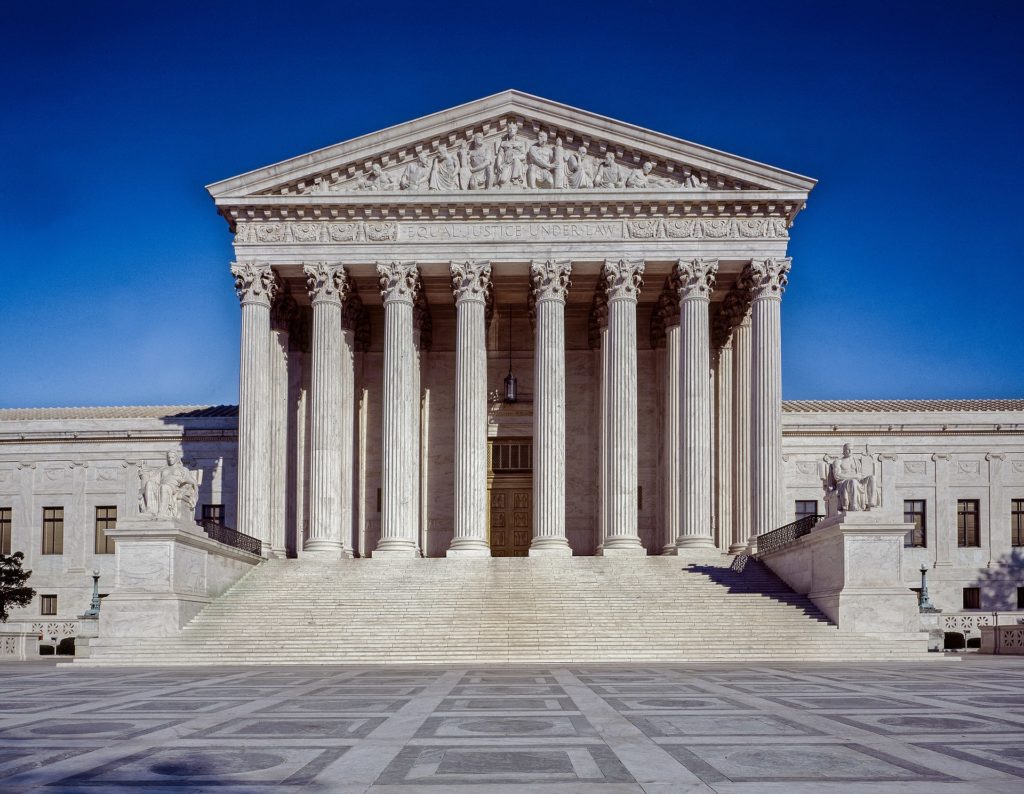Where 115 U.S. Supreme Court Justices Are From
The Supreme Court of the United States (SCOTUS) presides at the highest level of America’s judicial system. It’s made up of a chief justice and eight associate justices who get confirmed by a Senate majority vote after a nomination by the president. While geographic diversity has been a key factor in presidential decisions, today’s justices can have ties to more than one state. For example, though the newly appointed Amy Coney Barrett was born in Louisiana, she identifies as being from Indiana, where she attended law school and lives now.
From the first Supreme Court Justice, John Jay in 1789, to the recent confirmation of #115, Justice Barrett, we’ll see which states have a lot of justices and which are without a single SCOTUS. Then we’ll investigate the shortest and longest tenures on the map below.
View Where Supreme Court Justices Are From in a full screen map
The data for the map came from Wikipedia’s list of the state of residence at the time of appointment. You can sort the map by a number of data points, perhaps most notably the president who nominated each justice, their confirmation year, when their tenure started, their position (whether chief justice or associate justice), and more. Let’s jump into it with the states with the most justices.
States Jammed With Justices
Thirty-one of the 50 United States have produced at least one Supreme Court justice. As is often the case, some states have more than others, with New York being the state with most. The Big Apple is where 15 SCOTUS members called home, though it’s not the only state from which multiple justices hail, as you’ll see below.
- New York: 15 justices
- Massachusetts: 9
- Ohio: 9
- Virginia: 8
- Kentucky: 6
- Maryland: 6
- Pennsylvania: 6
- Tennessee: 6
- New Jersey: 5
- California, Georgia & Illinois: 4
You’ll note from the map that five of these states are Northeastern, while four are located in the Southeast of the country. This may be because there were fewer states from which early justices could be appointed.
And while the other states may not measure up to those on the list above, Alabama, Connecticut, and South Carolina’s three justices aren’t anything to sniff at. Additionally, as the newest member of SCOTUS, Amy Coney Barrett is Indiana’s second confirmed judge. Other states with two include Arizona, Colorado, Iowa, Michigan, Minnesota, New Hampshire, and North Carolina. That leaves Kansas, Louisiana, Maine, Mississippi, Missouri, Texas, Utah, and Wyoming which have one each. Now that we know the states where multiple justices resided, let’s take a look at those sans Supreme Court justices.
Interactive Maps Made Easy
Sign Up NowStates Without a Single SCOTUS

Now, not every state has had a Supreme Court justice who calls it home. Some don’t have a single one. Those 19 states are:
- Alaska
- Arkansas
- Delaware
- Florida
- Hawaii
- Idaho
- Montana
- North Dakota
- Nebraska
- New Mexico
- Nevada
- Oklahoma
- Oregon
- Rhode Island
- South Dakota
- Vermont
- Washington
- Wisconsin
- West Virginia
Seven (about 37%) of those are Western states, which becomes clear on the map. Even more specifically, the entire Pacific Northwest (Washington, Oregon, and Idaho) is without a single justice, along with the two non-contiguous states of Alaska and Hawaii. Now let’s move away from location towards the lengths of service.
Shortest & Longest Tenures

Supreme Court justices serve for life. From their confirmation until they die, resign, retire, or are impeached, SCOTUS members maintain their positions. How long that may be can differ from one justice to the next, though for the 106 non-incumbent justices, the average tenure was 16 years and 359 days.
The longest-serving justice was William O. Douglas. This 79th Supreme Court justice served from April 17, 1939 until he retired on November 12, 1975. In total, he served 36 years and 211 days.
The shortest-serving judge was John Rutledge. He served just 138 days between August 12, 1795 and December 28, 1795. Check out everything in between these two extreme tenure lengths by sorting the map. Speaking of, let’s see what more we can do with our maps.
Show More With Images in Your Map
Maps permit you to visualize your data geographically. But you can take that visualization one step further by incorporating photos or images into your maps. An example is our map of where Supreme Court justices are from in which we included portraits of each justice to better describe them.
Detailed steps are included in our blog post on how to Make a Map with Clickable Pop-up Infowindows and Images. It comes down to simply creating a column in your spreadsheet for the link of your images and selecting the proper options in the geocoder. Get started mapping your locations and your images today at batchgeo.com.
